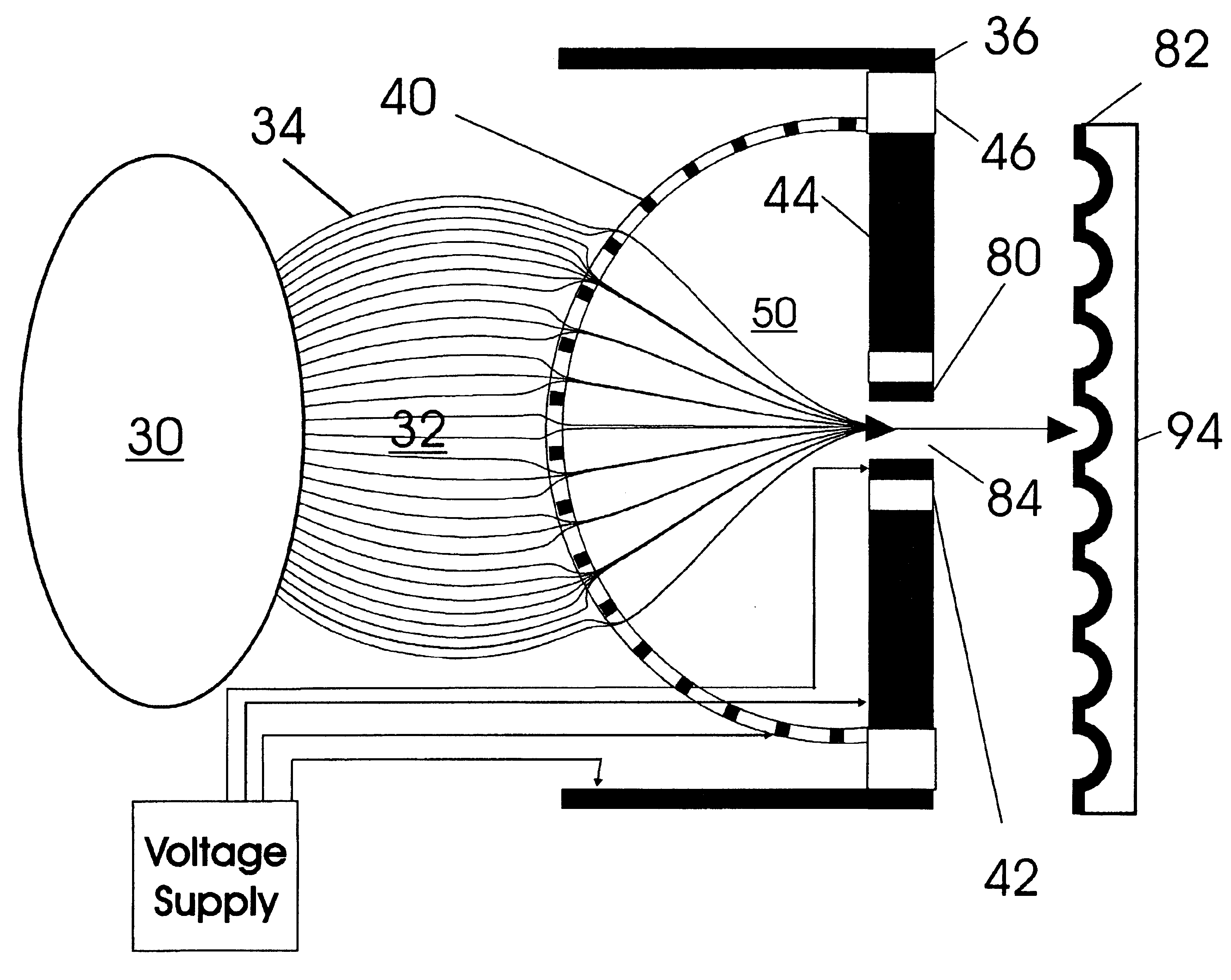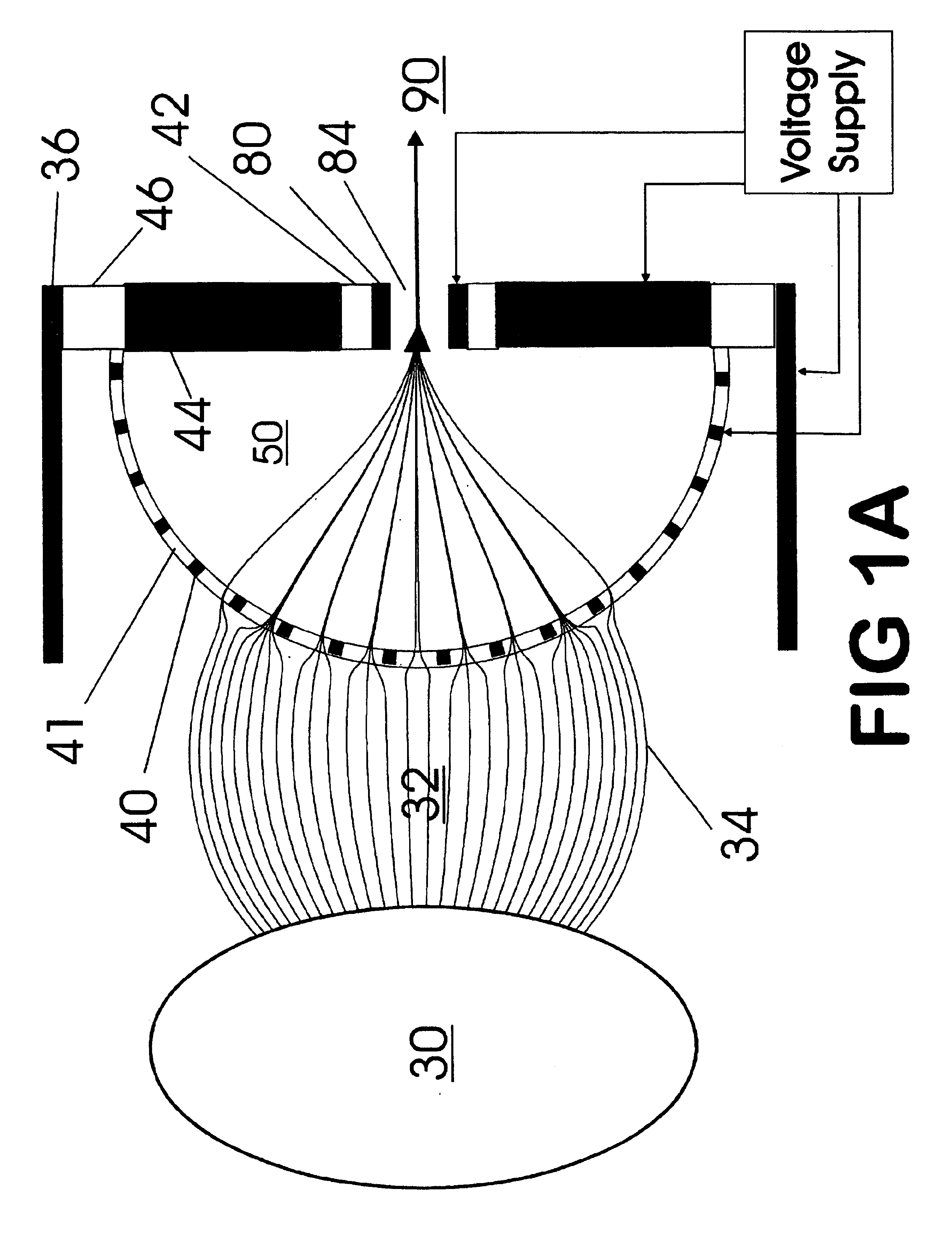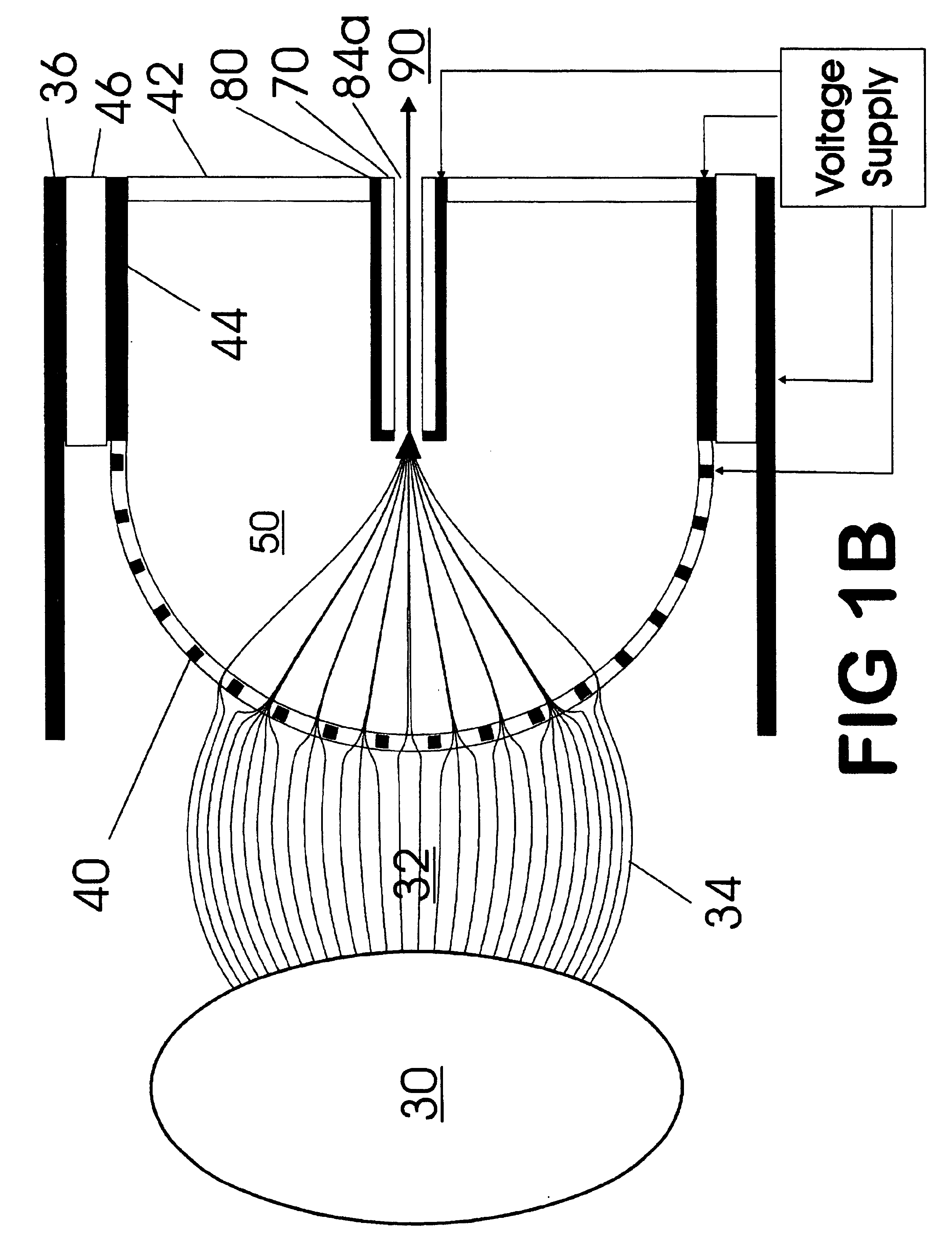Apparatus and method for focusing ions and charged particles at atmospheric pressure
a technology of atmospheric pressure and focusing ions, applied in the field of atmospheric pressure focusing ions and charged particles, can solve the problems of poor sampling efficiency, large general approach restrictions, and difficult sampling of atmospheric pressure sources to small cross-sectional targets or through small cross-sectional apertures and tubes (usually less than 1 mm) into mass spectrometers
- Summary
- Abstract
- Description
- Claims
- Application Information
AI Technical Summary
Benefits of technology
Problems solved by technology
Method used
Image
Examples
Embodiment Construction
-- FIGS. 1A and 6A (Basic Focusing Device)
One embodiment of the present invention is an ion or particle focusing device utilizing a high transmission element 40 as illustrated in FIG. 1A. The device includes an atmospheric pressure or near atmospheric pressure ion source region 30 from which ions are supplied to an ion collection region 32. This device is intended for use in collection and focusing of ions from a wide variety of ion sources; including, but not limited to electrospray, atmospheric pressure chemical ionization, photo-ionization, electron ionization, laser desorption (including matrix assisted), inductively coupled plasma, and discharge ionization. Both gas-phase ions and charged particles emanating from region 30 are collected and focused with this device. Ions and charged particles from region 32 move through a high transmission element 40 into an ion focusing-steering region 50. Strong electric fields in region 50 relative to region 32 cause ions in region 32 to tra...
PUM
 Login to View More
Login to View More Abstract
Description
Claims
Application Information
 Login to View More
Login to View More - R&D
- Intellectual Property
- Life Sciences
- Materials
- Tech Scout
- Unparalleled Data Quality
- Higher Quality Content
- 60% Fewer Hallucinations
Browse by: Latest US Patents, China's latest patents, Technical Efficacy Thesaurus, Application Domain, Technology Topic, Popular Technical Reports.
© 2025 PatSnap. All rights reserved.Legal|Privacy policy|Modern Slavery Act Transparency Statement|Sitemap|About US| Contact US: help@patsnap.com



